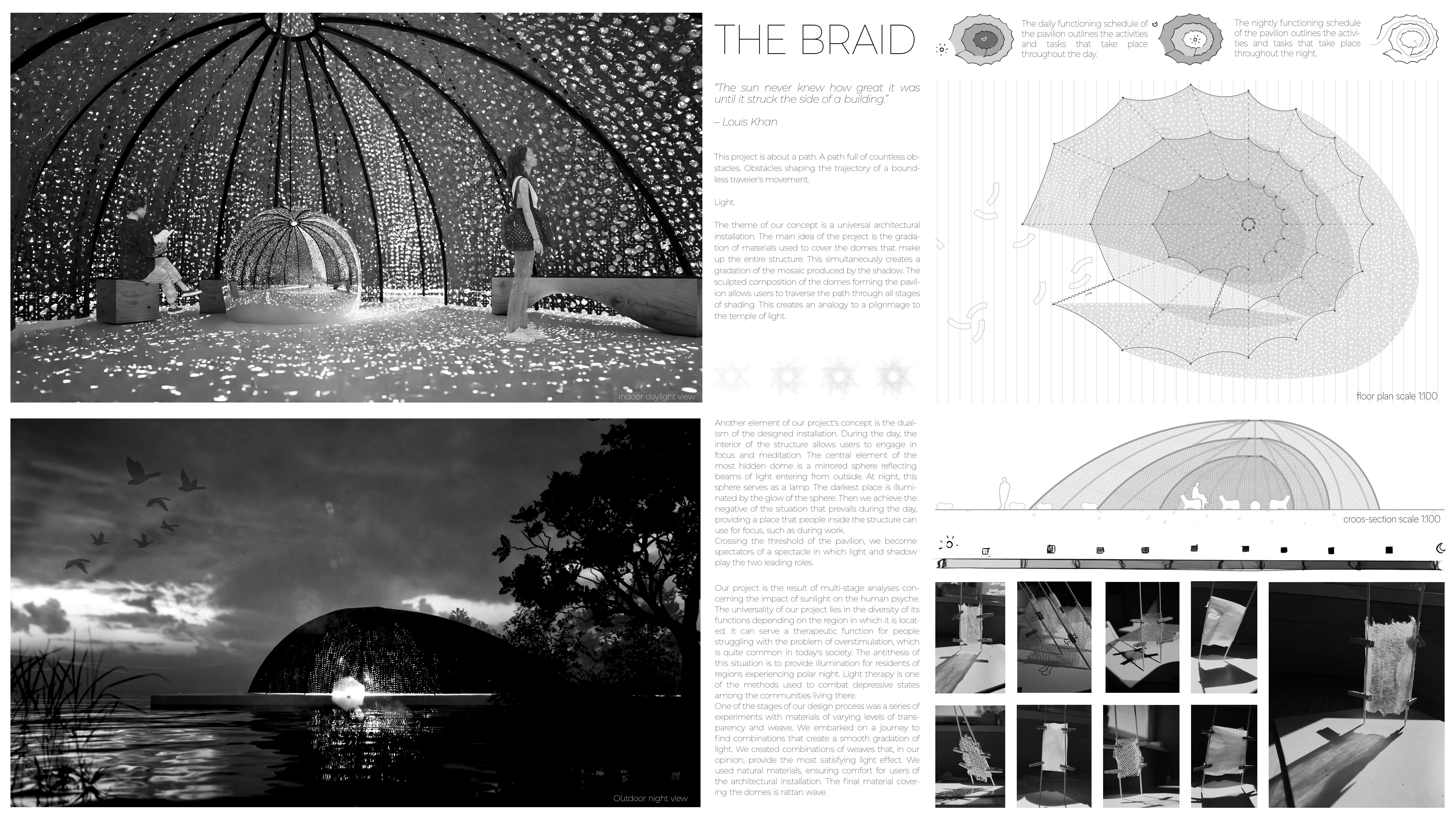2024 - The Braid

Category
Daylight in Buildings - Region 2: Eastern Europe and The Middle East
Students
Natalia Opołczyńska & Lidia Kosztołowicz
Teacher
Tomasz Broma
School
Wrocław University of Science and Technology
Country
Poland
Download
Download project board
“The sun never knew how great it was until it struck the side of a building.” – Louis Khan
This project is about a path. A path full of countless obstacles. Obstacles shaping the trajectory of a boundless traveler’s movement. Light.
The theme of our concept is a universal architectural installation. The main idea of the project is the gradation of materials used to cover the domes that make up the entire structure. This simultaneously creates a gradation of the mosaic produced by the shadow. The sculpted composition of the domes forming the pavilion allows users to traverse the path through all stages of shading. This creates an analogy to a pilgrimage to the temple of light.
Another element of our project’s concept is the dualism of the designed installation. During the day, the interior of the structure allows users to engage in focus and meditation. The central element of the most hidden dome is a mirrored sphere reflecting beams of light entering from outside. At night, this sphere serves as a lamp. The darkest place is illuminated by the glow of the sphere. Then we achieve the negative of the situation that prevails during the day, providing a place that people inside the structure can use for focus, such as during work.
Crossing the threshold of the pavilion, we become spectators of a spectacle in which light and shadow play the two leading roles.
Our project is the result of multi-stage analyses concerning the impact of sunlight on the human psyche. The universality of our project lies in the diversity of its functions depending on the region in which it is located. It can serve a therapeutic function for people struggling with the problem of overstimulation, which is quite common in today’s society. The antithesis of this situation is to provide illumination for residents of regions experiencing polar night. Light therapy is one of the methods used to combat depressive states among the communities living there.
One of the stages of our design process was a series of experiments with materials of varying levels of transparency and weave. We embarked on a journey to find combinations that create a smooth gradation of light. We created combinations of weaves that, in our opinion, provide the most satisfying light effect. We used natural materials, ensuring comfort for users of the architectural installation. The final material covering the domes is rattan wave.

























